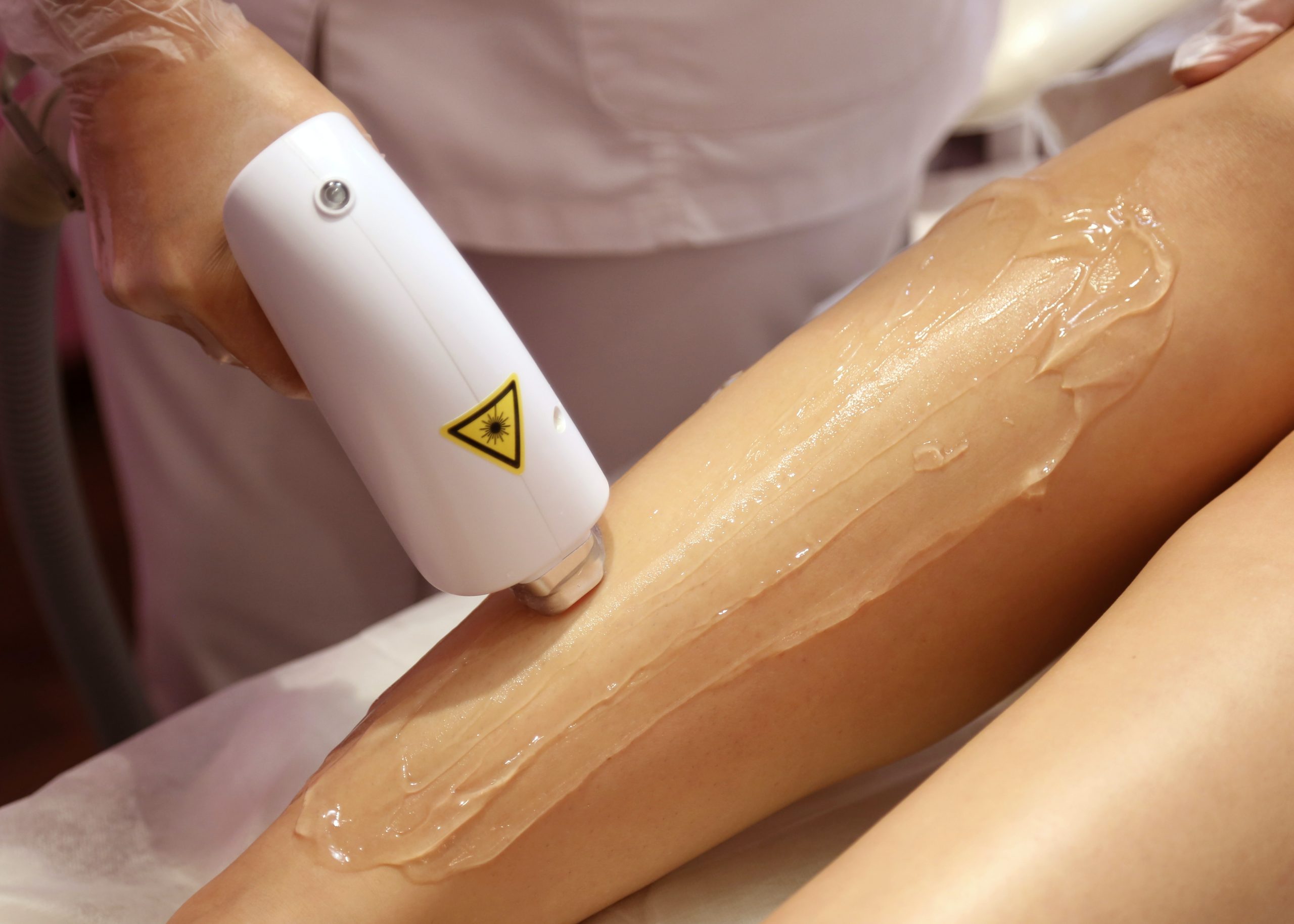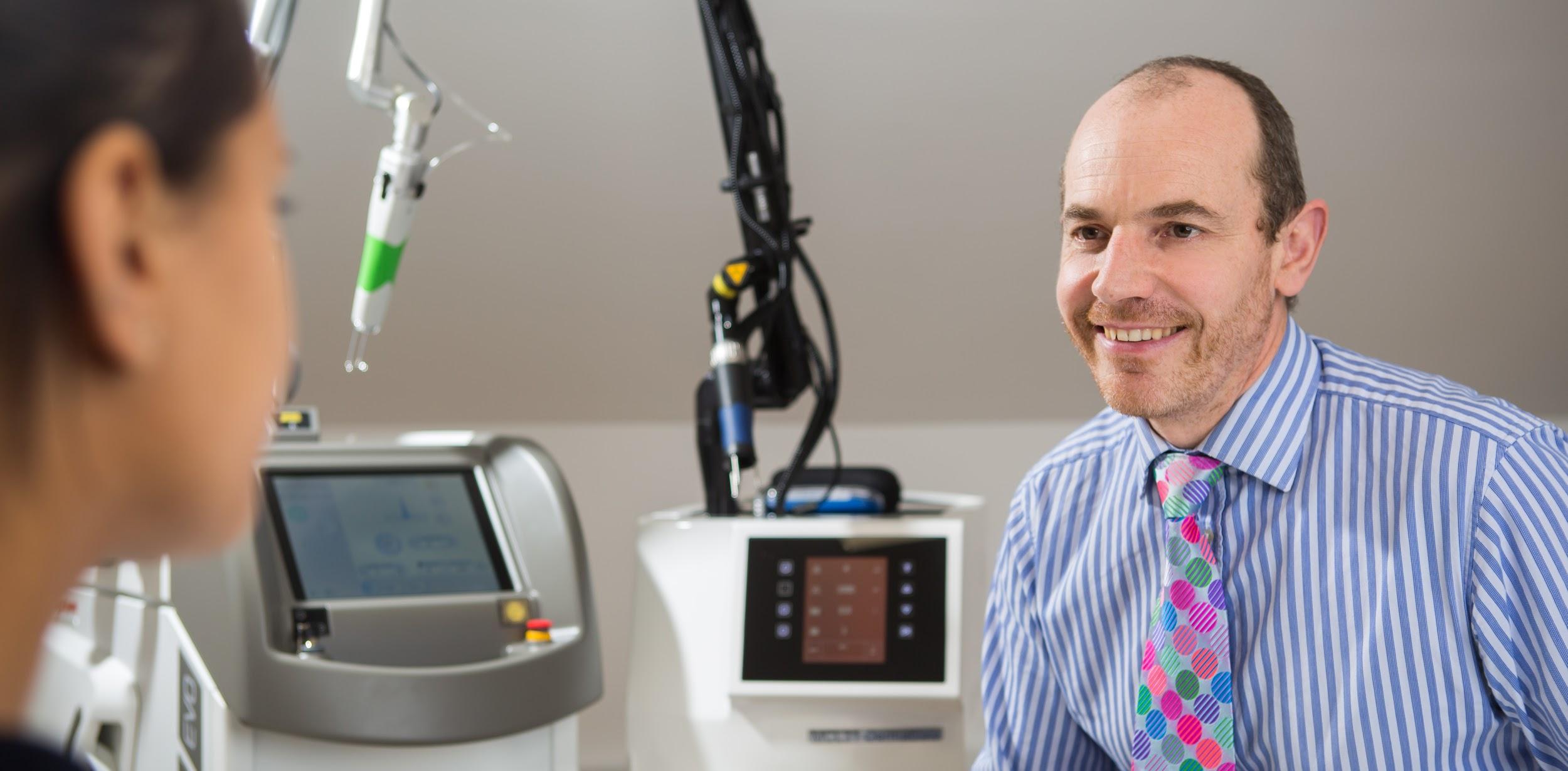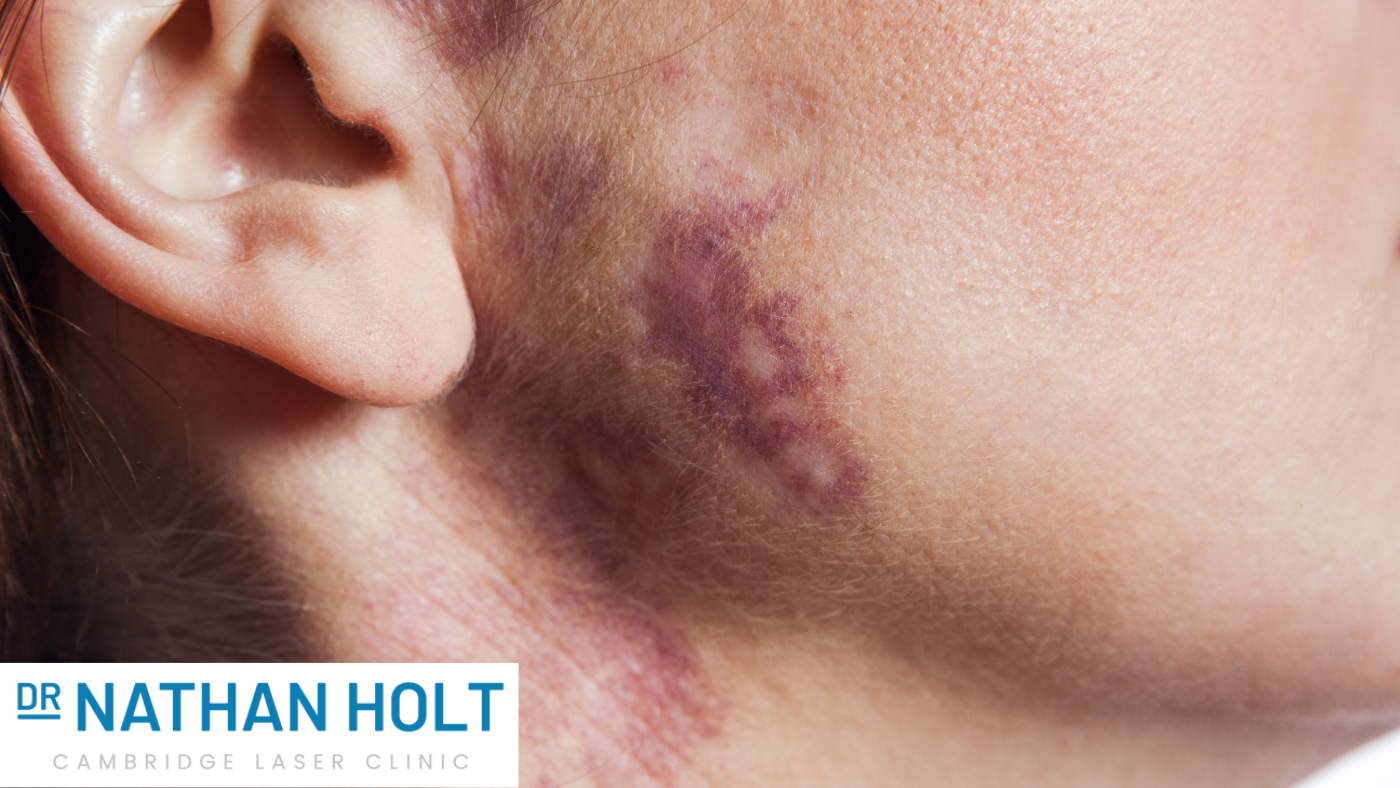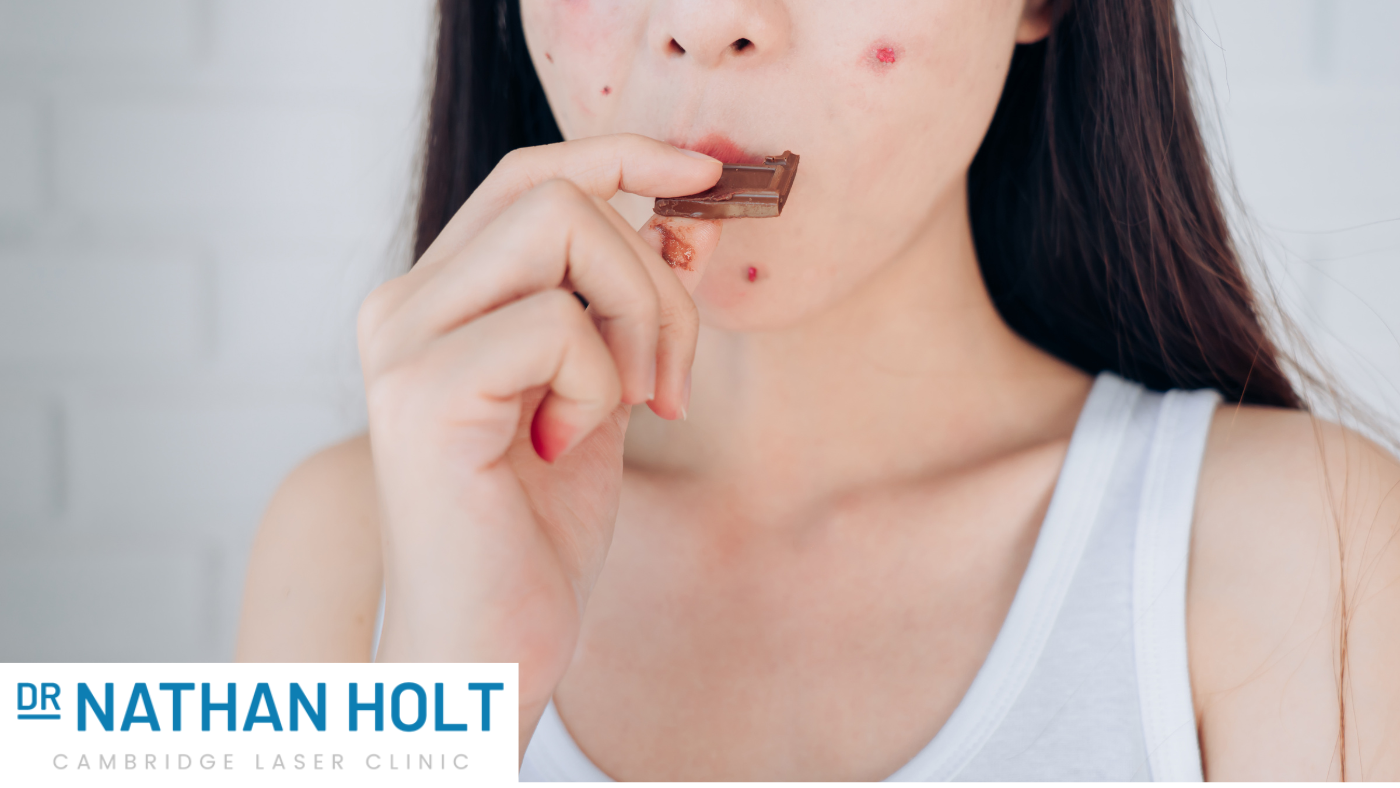Rosacea, a chronic skin condition characterised by facial redness, swelling, and visible blood vessels, can…

How Does Laser Hair Removal Work (and is it Really Permanent)?
As treatment methods become increasingly sophisticated, safe and effective, the popularity of laser hair removal is at an all-time high. Each year, millions of men and women across the UK turn to skilled cosmetic practitioners to help them banish unsightly and unwanted body hair, using technology that outpaces all other conventional hair removal methods.
But while laser hair removal is often billed as a ‘permanent’ solution to problematic hair, do the results of such treatments really last a lifetime? If not, what exactly can you expect in terms of effectiveness and the longevity of the results, if you undergo a course of laser hair removal?
Understanding the Science of Laser Hair Removal
Before explaining the different types of hair removal lasers, it’s useful to first consider the natural human hair growth cycle. Hair grows in cycles, which include the anagen (growth), catagen (transitional) and telogen (resting) phases.
For maximum effectiveness, laser hair removal should be performed during the anagen phase, when it is actively growing and most responsive to this type of removal method.
Laser hair removal operates on the principle of selective photothermolysis – essentially meaning that the procedure targets specific structures (hair follicles) using light energy to generate heat. The pigment in the hair follicles absorbs the light, converting it into heat, which then causes damage on a level significant enough to prevent the hair from regrowing.
Laser Hair Removal Treatment: What to Expect
While every laser hair removal treatment is technically unique – tailored to the requirements and physiology of the individual in question – the process as a whole always transitions through the same six basic stages.
This is what you can expect if planning to undergo a course of laser hair removal treatment for the first time:
- Consultation and Assessment: The process begins with a consultation, during which a trained professional assesses your skin type, hair colour and medical history. This evaluation helps determine the optimal approach to the procedure while ensuring your suitability.
- Preparation: On the day of the procedure, the area to be treated is cleansed and the hair is trimmed to a short length, in order to enable the laser to focus its energy on the follicles with pinpoint precision.
- Application of Laser: A handheld laser device is used to emit concentrated beams of light onto the target area. The light is absorbed by the pigment in the hair follicles, causing heat to build up and impair their ability to grow.
- Cooling and Comfort: Many modern laser devices incorporate cooling mechanisms to minimise discomfort and protect the surrounding skin during treatment. Something that can also significantly reduce after-effects and downtime.
- Post-Treatment Care: After the procedure, you may experience temporary redness and mild discomfort, akin to a sunburn. Following the provider’s aftercare instructions is crucial to promote healing and maximise the effectiveness of the treatment.
- Repeat Sessions: Hair grows in cycles and not all follicles are active simultaneously. Multiple sessions, typically spaced a few weeks apart, are usually necessary to target hair during various growth phases.
The number of sessions you will need to achieve the desired result will vary on the basis of numerous factors, based primarily on the amount of hair that needs to be removed and your unique physiology.
The Permanence of Laser Hair Removal: Fact or Fiction?
In the years following the introduction of laser hair removal technology, it became the norm to refer to such treatments as permanent. Even today, it’s far from uncommon for practitioners to market such procedures as ‘permanent hair removal’ treatments.
The reality, however, is somewhat more nuanced.
Achieving permanent hair reduction would actually be a more accurate term, given that it is technically impossible to guarantee the permanence of hair removal via such methods.
Over a series of sessions, laser hair removal can ensure a major reduction in hair growth on almost any part of the body. However, there are still factors that come into play – like hormonal changes or certain medical conditions – which may eventually lead to the hair growing back at some point in the future.
So while laser hair removal has the potential to be the most effective long-term solution for problematic hair, it does not necessarily qualify as ‘permanent’ hair removal. It is therefore important to discuss your requirements, objectives and expectations with your practitioner in advance so that you know exactly what to expect if you choose to go ahead.
Key Factors in the Longevity of the Results
While some of the factors that can influence the longevity of the results are firmly within the control of the patient, others are entirely outside their own influence. Most important of all is to ensure you follow your practitioner’s aftercare instructions to the letter, while at the same time having realistic expectations.
Here are just a few examples of the many factors that can influence the long-term effectiveness of laser hair removal:
1. Skin Type and Hair Colour
The effectiveness of laser hair removal is closely linked to the contrast between the skin’s complexion and the colour of the hair. The ideal candidate for this treatment typically possesses fair to light skin and dark, coarse hair. The reason behind this lies in the presence of melanin, the pigment responsible for both skin and hair colour. Laser energy is absorbed by melanin and greater contrast ensures more precise targeting of hair follicles, thereby enhancing the results.
2.. Hormonal Factors
Hormonal fluctuations can significantly impact hair growth and the subsequent effectiveness of laser hair removal. Conditions such as polycystic ovary syndrome (PCOS) or hormonal imbalances can lead to increased hair growth. Hormones stimulate hair follicles, making them more resilient to the laser’s effects. Managing hormonal imbalances, under the guidance of a medical professional, can enhance the longevity of results.
3. Treatment Area
Different body areas have varying hair densities and growth cycles. While laser hair removal is effective on nearly all body parts, certain areas may require more sessions due to higher hair density or different growth patterns. For instance, the face and bikini area often require more sessions than larger body areas like the legs or back.
4. Skin Tone
While laser technology has evolved to accommodate various skin tones, individuals with darker skin should exercise caution. Darker skin contains more melanin, which can absorb laser energy and potentially lead to skin discolouration or burns. Advanced laser systems with specific wavelength settings are designed to safely treat darker skin tones, but seeking a skilled practitioner with experience in treating diverse skin types is essential.
5. Proper Aftercare
The effectiveness and longevity of laser hair removal results can be prolonged through diligent aftercare. Following the practitioner’s guidelines for skincare post-treatment, avoiding sun exposure and using recommended creams or lotions can contribute to the healing process. Sunburned or irritated skin can hinder the laser’s effectiveness, leading to suboptimal results.
Once again, the key to maximising the effectiveness of laser hair removal lies in following the immediate and long-term care guidelines issued by your practitioner. Your suitability for laser hair removal will be determined during your initial consultation, along with the extent and longevity of the results you can expect after the required series of treatments.
At Cambridge Laser Clinic (CLC), we would be delighted to provide you with an obligation-free consultation at your convenience, during which we will discuss your aesthetic goals and help you choose the appropriate treatments to suit both your objectives and your budget.
For more information on the treatments above or to discuss any of our specialist procedures in more detail, contact a member of our team today.



